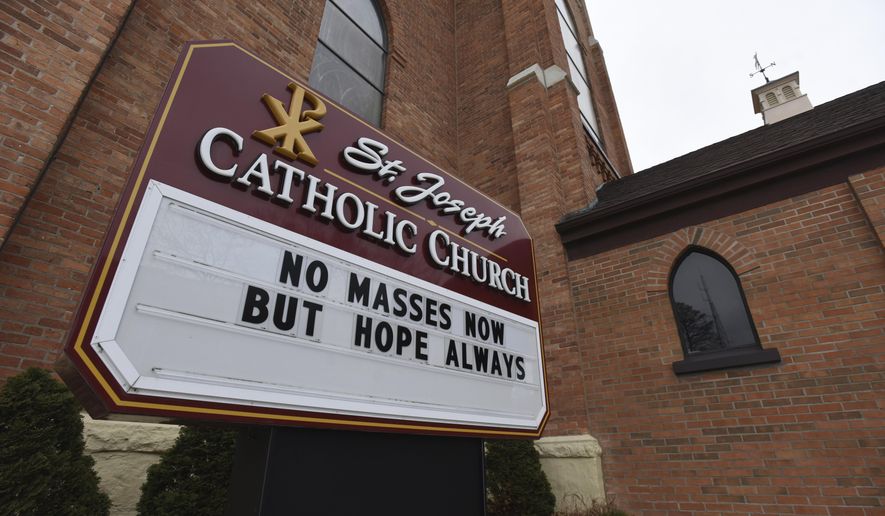The COVID-19 pandemic has fueled a decline in attendance at religious services, particularly among those with a “weak” commitment to regular worship attendance, a unit of the American Enterprise Institute reported Thursday.
Americans maintained a “mostly stable” level of religious identity, the Survey Center on American Life determined, but more stopped going to worship services, with young adults reporting the sharpest decline.
Levels of affiliation remained fairly constant before and after the pandemic, researchers found, although slight drops came from those saying they were members of the Church of Jesus Christ of Latter-day Saints or who identified as Hispanic Catholics.
Using data from the 2022 American Religious Benchmark Survey, the AEI unit worked with the University of Chicago’s National Opinion Research Center to tally religious affiliation and attendance before the pandemic (2018 to March 2020) and compare it with numbers from the spring of 2022.
From a July 2020 low of 13% of Americans saying they attended services in person, the percentage more than doubled to 27% in March 2022, but this was still lower than before the pandemic, and 33% of Americans said they never attend worship, up from 25% pre-pandemic.
Adults 50 and older, women, married adults, those with a college degree and those identifying as conservative were more likely to attend worship before and after the pandemic period.
Among denominational groups, those identifying as Hispanic Catholics as well as members of the Church of Jesus Christ of Latter-day Saints reported slight gains in regular attendance. LDS attendance rose from 70% to 72% after the pandemic, while Hispanic Catholic attendance rose from 22% to 23%. The survey showed that all other groups surveyed had a 2% to 3% drop in regular attendance.
People who identify as liberal (46%), never married (44%) and ages 18-29 (43%) saw the largest declines in worship attendance, up from the 30% level before the outbreak. Political conservatives who reported never attending services jumped from 14% to 20%, the analysis revealed.
However, the AEI report said, “The increase in Americans who report never attending religious services was largely driven by those who had sporadic attendance patterns before the pandemic.”
The group said the rise in nonattendance came from people who attended worship infrequently before the pandemic, with only a few regular attendees dropping out.
Among the study’s conclusions is that “the post-pandemic religious decline may portend increasing religious polarization, with more Americans either very religiously active or completely inactive,” the AEI unit reported.
For more information, visit The Washington Times COVID-19 resource page.
• Mark A. Kellner can be reached at mkellner@washingtontimes.com.




Please read our comment policy before commenting.